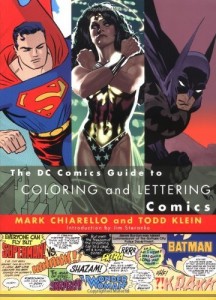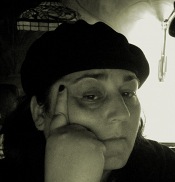I’m loving my current class — a drawing course on heads, hands and faces. Over the last four weeks, we’ve been slowly but surely improving our understanding of these body parts.
Archive for Comics
“all those letters that you wrote to yourself but could not address”
Over the last few days, I’ve been trying to get my head around digital lettering. At one level, this doesn’t seem like a hard topic. I mean, I’ve been dropping words on computer screens for a long, long time. But I’m really interested in figuring out what people in the comics industry are doing: what are typical workflows? Best font sizes?
To get some insights into the topic, I picked up a copy of The DC Comics Guide to Coloring and Lettering by Mike Chiarello and Todd Klein. I must confess that I was pretty disappointed. A big part of what the book has to say about lettering is about the debate between hand-lettering versus digital lettering. And I suspect that that conversation is kinda dead. Ah, well. The book is from mid-2004: it’s interesting how quickly dated it’s become.
Untalented
So there I am at the sports bar, surrounded by televisions. I sooo love being surrounded by televisions. Televisions barfing out sports.
But one of my colleagues recently resigned — he’s one of the long-time folks, so there’s a do. At a sports bar. I show up because it’d be crass not to, but it’s basically a social event, and I kinda suck at those. I figure I’ll show up, put in twenty minutes of face time and then sneak away.
“You know that there’s no hockey on, right?” one of my colleagues says to me, to make conversation. I figure the sports-themed surroundings have infected him.
“Hockey. That’s the one with the sticks, right?” I reply, dryly. I’m accustomed to people rolling their eyes at me.
Conversations with my annoyance
I’ve been trying to think through why it was that Monday night’s class annoyed me as much as it did.
Perhaps it all boils down to jarred expectations. I went away and did what I thought was our homework: I took my selected pitch, I fleshed out the characters and considered the stuff that I’d need to address in a first issue, and developed a story that, I felt, gave a useful introduction to the setting, the characters, and the overarching themes, and also had a bit of action/adventure for fun. I broke down my story into a story map — I know exactly what’s happening on each page. I’ve already had to hack and slash some of the stuff that I wish I had room for. But I was really happy with the story and wanted to feel good about it a bit.
Pitch Night
Tonight was “pitch night” at Writing for Comics Part 2. We were instructed to bring 3 ideas for new on-going series (or, perhaps, a longish graphic novel), and we’d each pitch our ideas to the class. Ty gave us a bunch of key things that our pitches needed to cover off, and he’d critique how well we “sold” the ideas, and the class would ultimately vote on one of the three pitches. The winning pitch essentially becomes the idea you hafta run with for the final two classes (and final writing exercises).
Some of the ideas were grounded in exercises we’d done in other classes. For example, one of my favourite ideas from a classmate involves a group of Catholic priests/exorcists who fight demons and perform martial arts. The guy who presented this idea had sketched out elements of this particular story world in the world building exercise, and fleshed out some characters for the world in our character archetypes exercise. Tonight, he pitched it, more formally, as “The Exorcist from U.N.C.L.E.” and it’s the one I voted for (and, conveniently, the idea of his that “won”, so I look forward to seeing the actual story).
Word Balloons as Art Form
I’ve been taking this course for the last few weeks: Writing For Comics Part 1, taught by Ty Templeton. Ty used to do this gig as part of the Toronto Cartoonists Workshop, but he’s now put out his own shingle that reads “Comic Book Bootcamp” at the new Comic Book Embassy in Chinatown.
The course has challenged me, I must confess. Not in the sense that “it’s hard” but rather that what he’s teaching feels very formulaic. His style is very much about teaching these template structures for different story types: Plot-driven stories, Character-driven stories, etc., and then explain to us how to fill in the details. For my part, I find that my brain wants to resist these structures as somehow a dumbing down of the writing process.

